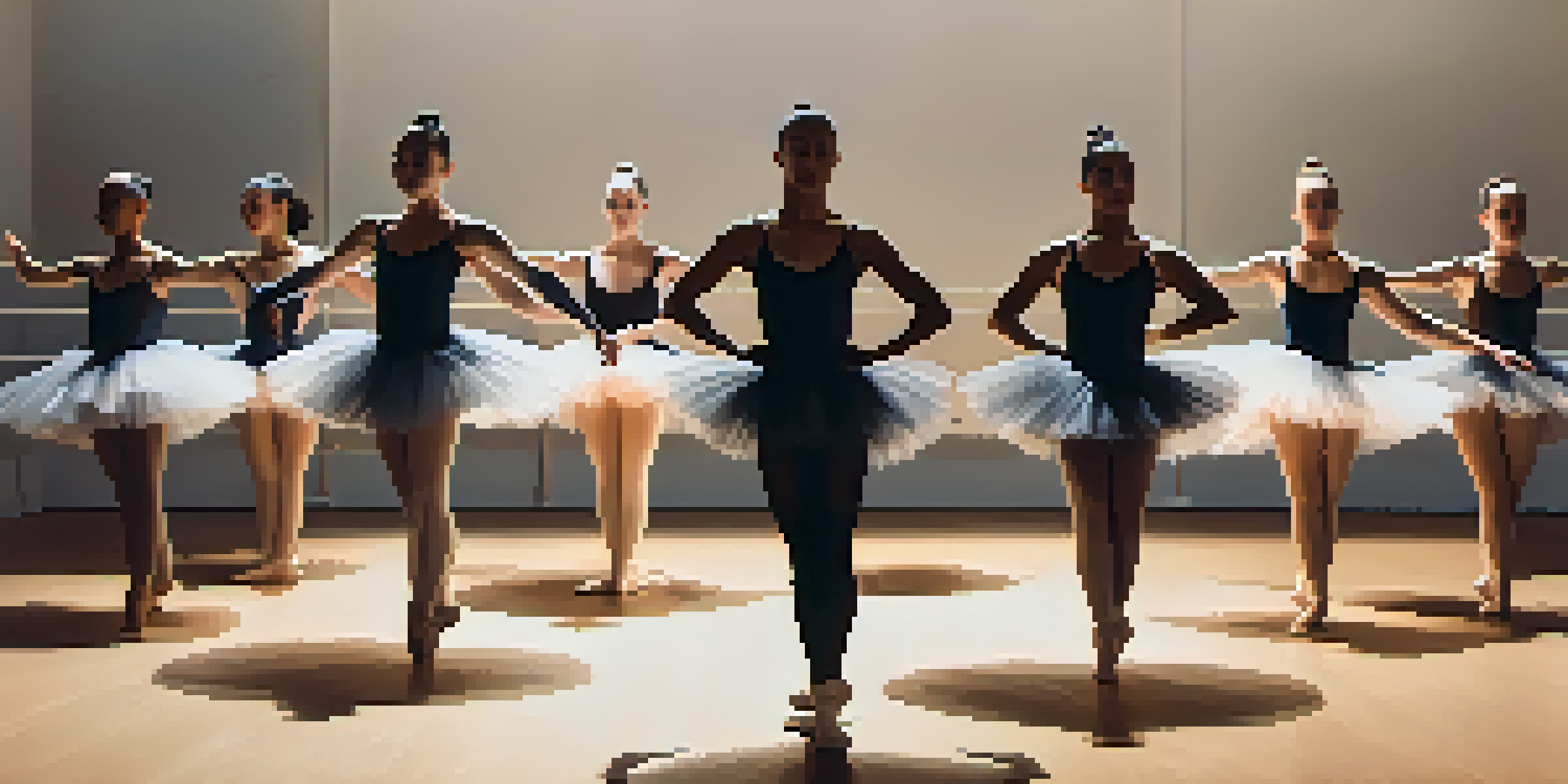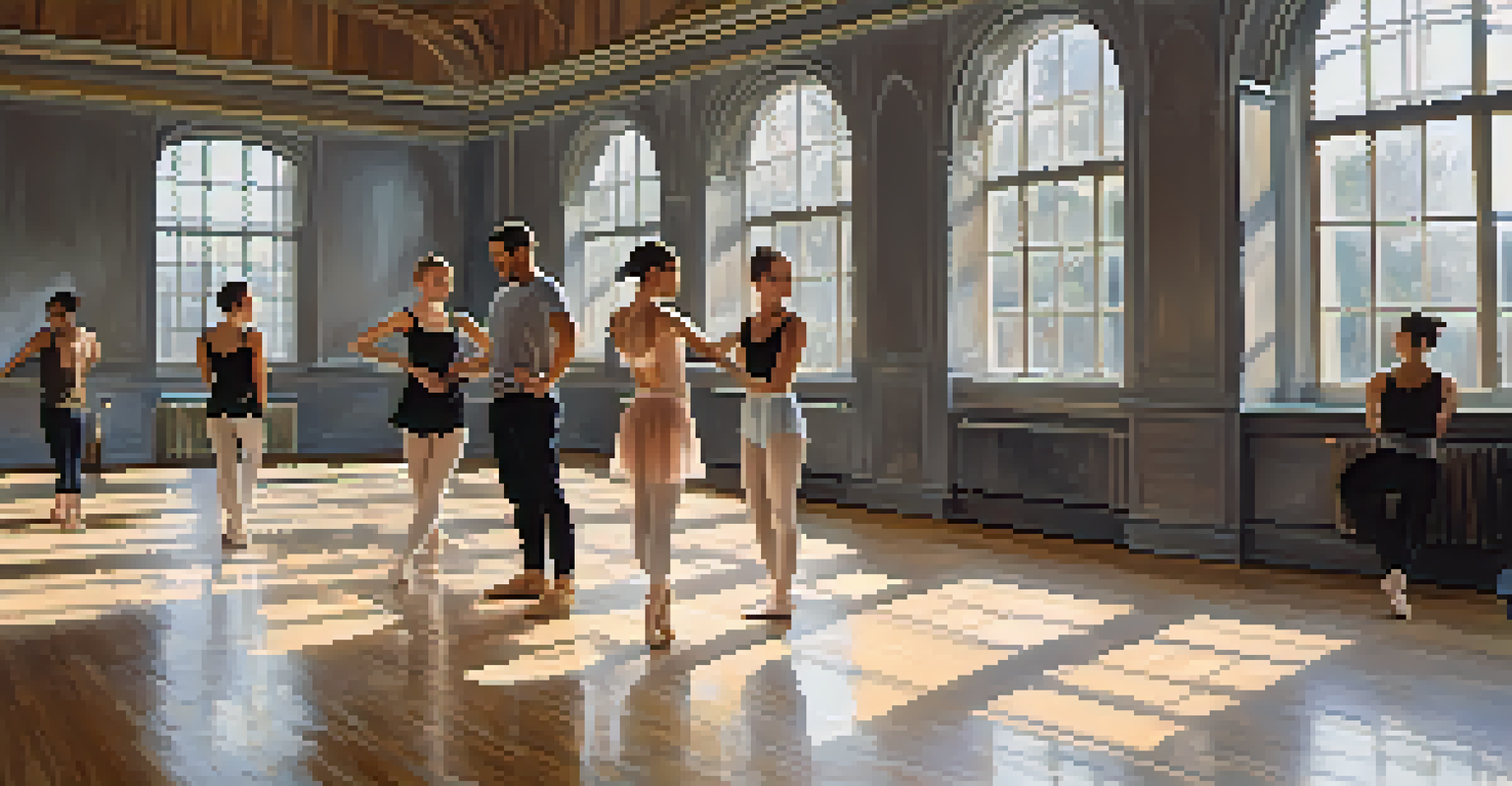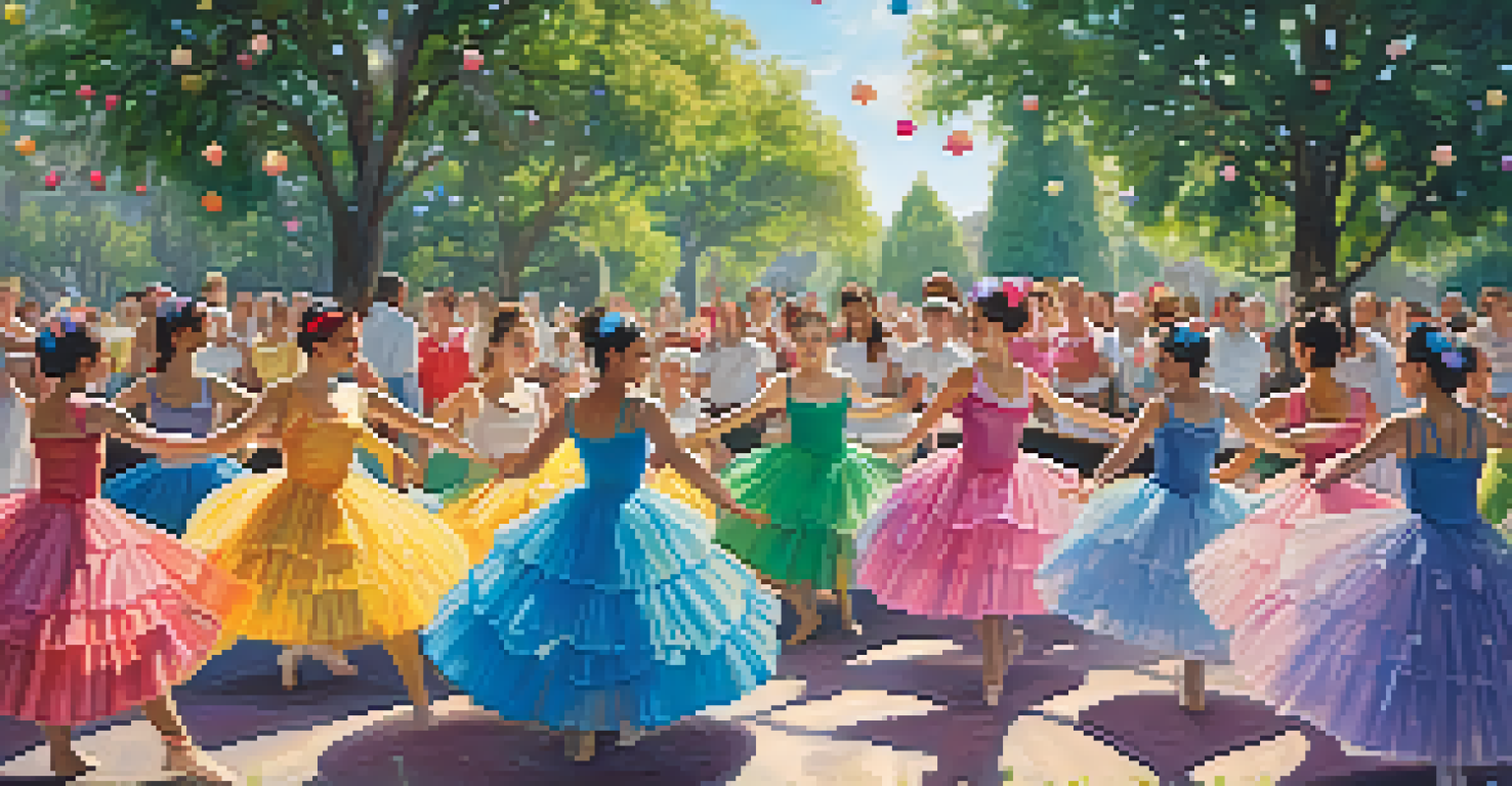Ballet and Its Complex Relationship with Gender Identity

The Historical Context of Gender in Ballet
Ballet has deep roots in European art, often reflecting societal norms of its time. Traditionally, the art form has emphasized strict gender roles, with male dancers often portraying strength and leadership while female dancers embodied grace and delicacy. This historical context creates a framework within which gender identity is often interpreted and challenged.
Dance is the hidden language of the soul.
As ballet evolved, these rigid roles began to show cracks, prompting discussions around how gender identity fits into this storied tradition. The introduction of more fluid and diverse representations of gender has pushed the boundaries of what ballet can represent. As audiences begin to demand authenticity, the art form faces the challenge of adapting to these new expectations.
This historical backdrop sets the stage for understanding how ballet can both reinforce and challenge gender norms, making it a rich area for exploration. As we delve deeper into this relationship, it becomes clear that ballet is not just an art form, but a mirror reflecting broader societal changes regarding gender identity.
Ballet: A Mirror to Society's Gender Norms
Ballet often serves as a reflection of the gender dynamics prevalent in society. The portrayal of male and female roles in ballet has historically aligned with traditional gender expectations, where men are often seen as powerful and women as submissive. This alignment has sparked discussions about the implications of such representations on audience perceptions and societal norms.

For instance, iconic ballets like 'Swan Lake' and 'The Nutcracker' showcase characters that fit neatly into these boxes, reinforcing stereotypes. However, as society evolves, so too does the interpretation of these roles, leading to innovative reinterpretations that embrace more nuanced understandings of gender. Productions today may choose to cast male dancers in traditionally female roles, effectively challenging the audience's perceptions of masculinity and femininity.
Ballet Reflects Gender Norms
Ballet historically mirrors societal gender dynamics, often reinforcing traditional roles while evolving to embrace more fluid representations.
This dynamic interplay between ballet and societal norms illustrates how the art form can influence and be influenced by changing views on gender. As we examine specific examples, we can see how ballet not only entertains but also encourages critical discussions about identity.
Challenging Gender Stereotypes in Contemporary Ballet
In recent years, many contemporary ballet companies have sought to challenge traditional gender stereotypes, creating space for more inclusive narratives. Dancers are increasingly stepping beyond the constraints of gendered roles, allowing for a more authentic expression of their identities. This shift is not merely a trend; it's a response to a growing recognition of diverse gender identities within the dance community.
Art is the most beautiful of all lies.
Choreographers are experimenting with mixed-gender casts and non-binary interpretations of classic pieces, inviting audiences to reconsider their preconceived notions. For example, works like 'A Midsummer Night's Dream' have been reimagined to celebrate fluidity in gender, showcasing how ballet can adapt to contemporary values. This evolution reflects a broader cultural movement towards acceptance and inclusivity, signaling a significant departure from the past.
These efforts not only enrich the art form but also empower dancers to express their gender identities fully. By challenging stereotypes, contemporary ballet is paving the way for a future where everyone can see themselves represented on stage.
The Role of Male Dancers in a Changing Landscape
Male dancers are increasingly finding themselves at the crossroads of tradition and modern expression. Historically, male roles in ballet have been characterized by a certain stoicism and strength, but contemporary narratives are redefining what it means to be a male dancer. This change allows for a broader spectrum of expression, where vulnerability and emotional depth can coexist with physical prowess.
Some male dancers are embracing a more fluid approach to their roles, challenging the idea that masculinity must conform to traditional standards. For instance, male dancers who take on roles traditionally reserved for women are not only challenging their own identities but also reshaping audience perceptions. This shift invites conversations about what it means to embody masculinity in a space that has often been rigidly defined.
Challenging Stereotypes in Ballet
Contemporary ballet is breaking down traditional gender stereotypes, allowing for more inclusive narratives and authentic expressions of identity.
As male dancers navigate this evolving landscape, they contribute to a more inclusive environment within ballet. Their experiences and choices play a vital role in fostering a culture that values authenticity over adherence to outdated norms.
The Impact of LGBTQ+ Voices in Ballet
LGBTQ+ voices are playing an increasingly vital role in reshaping the landscape of ballet. As more LGBTQ+ dancers and choreographers step into the spotlight, they bring unique perspectives that challenge conventional narratives and broaden the representation of gender identity. Their contributions not only enrich the art form but also help to normalize diverse identities within the ballet community.
For example, many LGBTQ+ choreographers are creating works that explore themes of gender fluidity and the complexities of identity. These pieces often resonate with audiences on a personal level, fostering a deeper understanding of the struggles and triumphs faced by those who defy traditional gender norms. This visibility is essential in promoting acceptance and encouraging future generations of dancers to embrace their identities.
As the ballet world becomes more inclusive, it sets a precedent for other performing arts to follow. The impact of LGBTQ+ voices is not just felt on stage; it reverberates throughout society, inspiring dialogue around gender identity and representation in all forms of art.
The Future of Gender in Ballet
The future of ballet is poised for transformation as conversations around gender identity continue to evolve. As society moves toward greater acceptance and understanding of diverse identities, ballet must adapt to reflect these changes. This could mean more inclusive casting, innovative choreography, and an openness to exploring complex themes related to gender.
Companies are beginning to recognize the importance of representation, leading to more opportunities for dancers of all gender identities. The push for inclusivity is not just a trend; it reflects a fundamental shift in how we view dance as a medium for expression. By embracing diversity, ballet can become a platform for storytelling that resonates with a wider audience.
LGBTQ+ Voices Transform Ballet
The increasing presence of LGBTQ+ dancers and choreographers is reshaping ballet, promoting diverse gender identities and fostering acceptance.
Looking ahead, the ballet community has the opportunity to lead by example, demonstrating how art can challenge societal norms and foster acceptance. The future is bright for ballet as it embraces the richness that comes from diversity in all its forms.
Conclusion: Ballet as a Space for Gender Exploration
In conclusion, ballet offers a unique space for exploring and expressing gender identity. Through its rich history and evolving practices, it challenges traditional norms while celebrating the complexity of gender. As we have seen, both dancers and choreographers are at the forefront of this transformation, using their platforms to create more inclusive narratives.
The journey of ballet in relation to gender is ongoing, with every performance and production contributing to the dialogue. As audiences become more aware of the importance of representation, ballet must continue to adapt and innovate. This adaptability not only enriches the art form but also creates a more welcoming environment for all who wish to participate.

Ultimately, ballet can serve as both an art form and a catalyst for change, demonstrating the power of expression in all its diverse forms. Embracing this complexity allows ballet to remain relevant and inspiring, paving the way for future generations to explore their identities on stage.